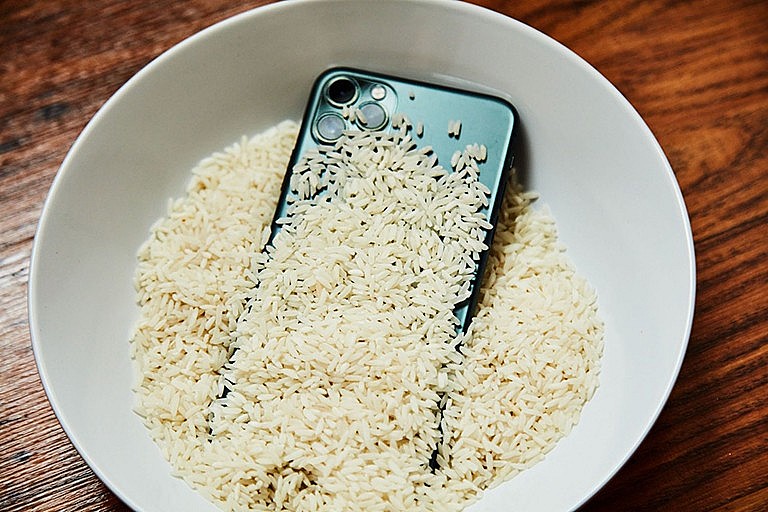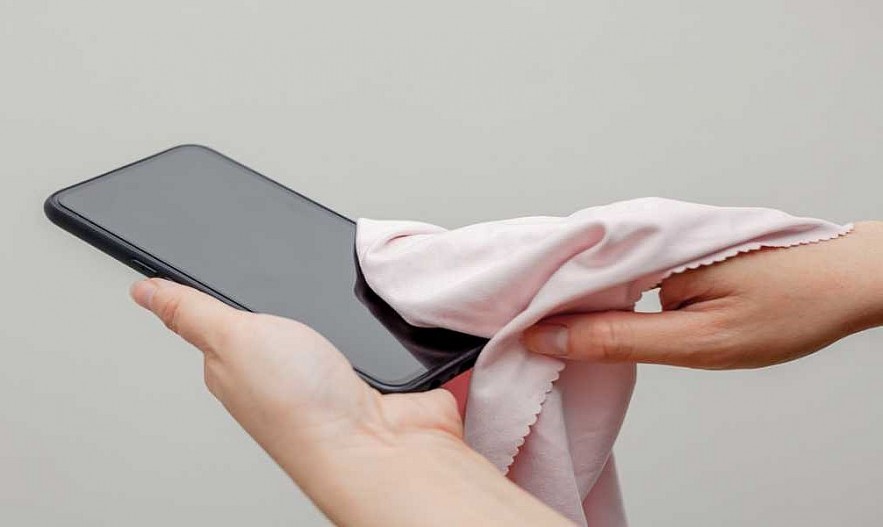Fact-Check: Bury A Wet SmartPhone in Rice to Absorb Moisture
 Top 10 Most Popular Smartphone Brands in the World (Updated 2023/2024) Top 10 Most Popular Smartphone Brands in the World (Updated 2023/2024) |
 Don't Turn On Wifi 24/7: You Could Lose All the Money in Bank Account Don't Turn On Wifi 24/7: You Could Lose All the Money in Bank Account |
 |
| Bury a Wet Smartphone in Rice |
Truth: You Cannot Use Rice to Dehumidify Smartphones
A "secret" that has been passed down through the generations is to use rice to dehumidify a phone that has come into contact with water. This idea originated in the field of photography. According to a 1946 article in Popular Photography, if a user moved to a humid climate, tea, brown paper, and rice could take the place of dehumidifiers.
Because rice absorbs moisture, the magazine included it in their list of more than 100 ways to extend the life of equipment in 1996. Following that, rice was mentioned in numerous guides and instructions on maintaining and using electronic devices, leading many people to believe that this common household item would save phones.
Before the invention of smartphones, people used the trick of dehumidifying phones with rice for many years. This is because, in theory, dry rice has the ability to absorb all surrounding moisture.
Users should be aware of the harsh reality, though, which is that placing a wet phone in rice will not affect anything at all.
In a test, the website Gazelle found that, when it comes to household items like cat litter and oatmeal, rice is the worst desiccant.
In a related experiment, TekDry—a company that offers emergency electronic device rescue services—discovered that the amount of water that evaporated in the wild was higher than that which evaporated in a barrel of rice.
Co-founder of TekDry Craig Beinecke stated: "The rice hoax persists because it seems plausible, despite its futility. The legend of rice protecting phones from water damage has been handed down through the years."generation" .
The reason for this is that rice does not possess a miraculous capacity to retain moisture. It is extremely weak, even though it can absorb water from moist objects. Furthermore, the primary issue remains unresolved. Even materials like silica gel, which have strong hygroscopic qualities, are unable to come into contact with the liquid inside the phone. Turn off the phone occasionally and give it some time to dry off if the water doesn't get inside it too much.
Not only that, but in certain situations, submerging a wet phone in rice can exacerbate the damage. Rice "dust" is usually very fine and can enter phone ports. It can form a paste-like substance that is more challenging to remove when combined with water.
| Rice contains a thin layer of bran, experts warn. It can stick to the phone's speakers, charging holes, screen edges, and other openings when it comes into contact with water. Even riskier, a lot of people have the tendency to plug in the charger by mistake and start an unintentional fire or explosion. |
How to Save a Wet Smartphone Effectively
 |
| How to Dry a Wet Smartphone |
Waiting for a wet smartphone to dry isn't always the solution to saving it. The best course of action is to get rid of the water as soon as you can.
The first thing you should do if your phone gets wet in the water is turn it off right away. If water has got inside the phone, do not try to turn it on. After that, users should take out the case, the microSD card tray, the SIM card tray, and the battery, if it is detachable.
The most straightforward option available to users is to use a fan or compressed air spray to force water out of the ports. That won't, however, affect the water that has seeped into the phone in any way.
Users must open the machine to remove the water, after which they can either clean it with 90% isopropyl alcohol or put it in front of a fan.
Lastly, after completing the aforementioned procedures, users shouldn't boot the device right away. Rather, you ought to bide your time for a few more hours until the machine dries completely. Users should not plug in the charger and instead take the device to a repair shop for inspection if they are performing "first aid" and believe it has been exposed to heavy water.






























